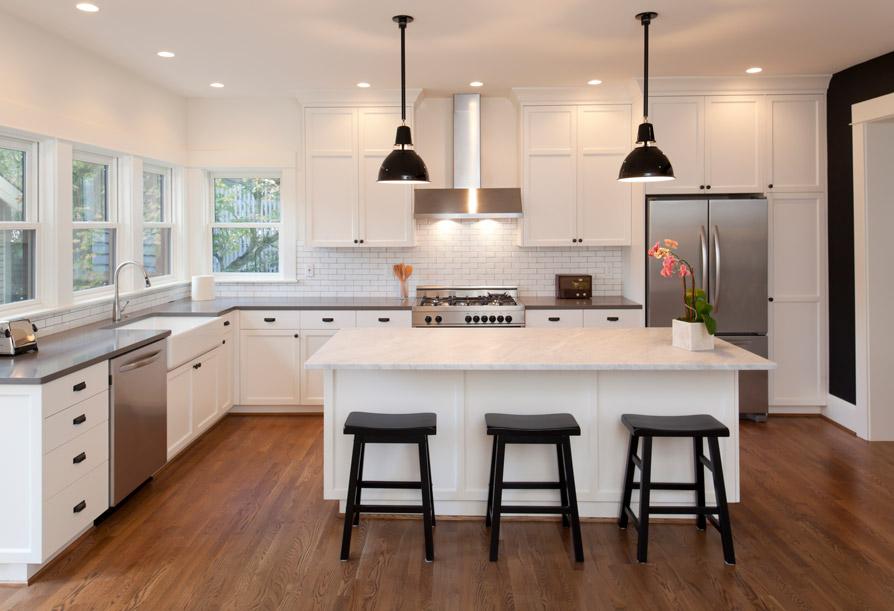For most of us, the extent of our electrical engineering education stopped when we left high school. So when you experience electrical issues in your home, the idea of fixing them yourself seems daunting and for good reason – your electrical system is composed mainly of unseen networks of wires, complex connections and potentially dangerous electrical charges.
If you’re experiencing electrical problems in your home, chances are many other homes are experiencing the same ones. The experienced team of electricians at AJ’s Electrical have seen it all and outlined some common electrical problems you might find in your home and given tips to help you troubleshoot yourself.
Random Power Surges and Brownouts
While usually caused by external forces such as lightning or a tree limb falling on a power line, there are also internal forces that can cause random power surges or brownouts.
One of the most common sources of an abnormality in electrical power is an electrical overload. This is when too many electrical devices are plugged into the same circuit.
What to do: Make sure your devices aren’t overloading circuits.
If your circuits aren’t being overloaded then the next factor may be faulty or damaged wiring. These can also contribute to an electrical fault, resulting in a power surge or brownout.
What to do: A licensed electrician can inspect and determine if your home wiring is in good condition and up to code.
Abnormally High Electric Bills
One of the largest contributors to high energy usage are appliances that are left plugged in when you’re not using them. While newer appliances use less energy than older ones, they still drain energy when plugged in. Electricians refer to these as vampire appliances as they continuously drain electricity even if you’re not aware of it.
What to do: Connect vampire appliances to power strips and turn power strips off when you’re not using them.
Another factor to take into consideration is the types of appliances you’re using. Large appliances such as dishwashers, washing machines and dryers all use up a tremendous amount of energy.
What to do: Maximize the efficiency of each machine by filling them to their capacity for each cycle you run.
Something else that might be contributing to a high electric bill might be older or malfunctioning equipment. For example, while refrigerators can last upwards of a decade, they were not built for it. Their seals and door gaskets start deteriorating much sooner. Therefore, the fridge has to work harder just to keep your food as cold as it always did.
What to do: Assess your appliances regularly and replace faulty/ worn down parts or the appliance itself as deemed fit.
Flickering Lights
Flickering lights, unless you live in a haunted house, are a clear indication that you have a larger electrical issue on hand – it can even become a fire hazard. Start by examining the bulbs themselves. Light bulbs can loosen over time and if there isn’t proper contact between the bulb and the base, it can sometimes cause the light to flicker.
What to do: Tighten any loose light bulbs.
If that didn’t fix the problem, then it’s time to head over to the light switch. With the world of technology always changing and evolving, old or outdated switches aren’t always compatible with new LED lights.
What to do: Double-check that the ratings on your light bulbs and switches are compatible.
Light Switch Not Working
When a light switch isn’t working, the first thing to check is the light bulb. As straightforward as it sounds, there’s no sense in doing a whole bunch of work when the simple fix was simply to switch out the bulb.
What to do: Replace the light bulb with a new one.
Now that that’s out of the way, you can move on to checking the switch itself. One of the most common causes of a light switch not working properly is a broken switch mechanism. Things to check for include:
- If the switch feels loose when operating it.
- If the switch feels warm to the touch.
- If the switch makes a humming or buzzing sound.
These are all a likely indication that there is a defective component in the switch and will need to be replaced.
What to do: Examine the light switch.
Another common reason for a light switch to not be working is due to a tripped circuit breaker or a blown fuse. Head to the electrical panel and find the corresponding breaker or fuse. If the breaker was tripped, reset it. If the fuse was blown, replace it. While a tripped breaker is an easy fix, a repetition may indicate a short circuit in the wiring and may need professional repair.
Seek Professional Help When Needed
You’re not alone in experiencing these electrical issues but it’s better to act sooner rather than later. A simple problem, left unresolved can lead to much more dangerous and expensive outcomes. While we’ve troubleshooted some simple issues it’s always best to seek out professional help if you don’t feel comfortable, or safe, fixing them yourself.

